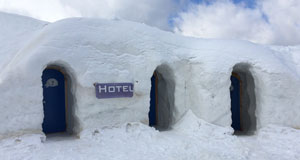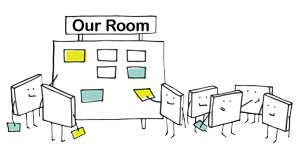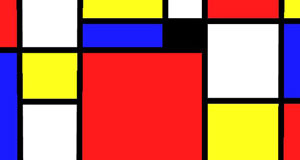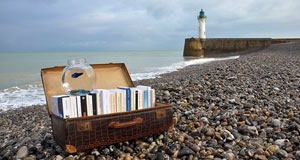Dream Room Design
Students will explore length, width, perimeter, and surface area, convert measurements, and work with 2-D representations of 3-D objects.
App: Wixie™
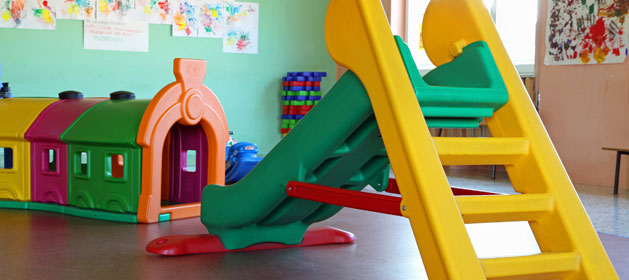
Task
Are you satisfied with the design of your bedroom? Have you seen advertisements for posters, TVs, or a bed you just have to have? Your parents are never going to give you your dream room, unless you can accurately describe the items in it and why they are necessary. Using measurement skills, create your own dream bedroom design!
Engage
Introduce the concepts of length, width, and perimeter to your students. Make sure that they know how to determine the surface area for simple rectangular shapes (width x length).
Have them practice their measurement skills in your classroom, determining the dimensions of your classroom and objects in it, such as your desk, student desks, and any chairs, tables, and bookcases.
If you are working with older students, teach them how to find the area of polygons by breaking them into component shapes and estimating.
Assign students to take some basic measurements in their rooms at home and calculate the square footage. Have them measure some common bedroom elements such as beds and dressers.
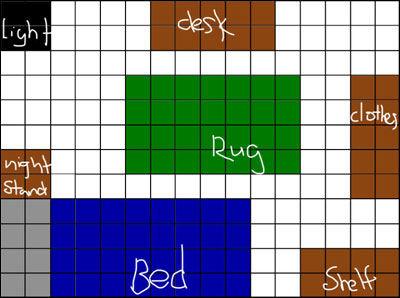
Brainstorm with your class the elements a bedroom might have, such as bed, dresser, and television. Which items are needs and which are desires? What should a bedroom do for the occupant? If it contains a bed, do all beds have to be exactly the same?
Create
Have students begin by creating a paper sketch of their dream room. You might create a worksheet that has a 12 x 12 room with gridlines every 6 inches.
The designs should include major elements that make it obvious this is a bedroom, like a place to sleep and a place to store clothes. Encourage them to think about accurate or appropriate space between objects.
You may also ask them to add architectural details such as power outlets, doors, windows, cable access, and telephone access. How will they designate these items in their drawing? How will they show them to scale? Have students develop a key for their design using shapes and color.
Once students have a general idea of their room’s layout, have them launch Wixie to complete their design to scale. They can create from a grid template to create accurate and appropriately sized representations of objects like rugs, dressers, beds, and desks.
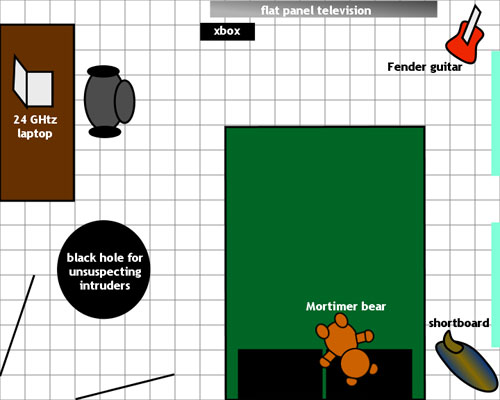
Encourage them to use colors and add text descriptors for clarification. When their visual design is complete, have students add a page, or pages that includes a description of their dream room and the objects in it.
If students are new to descriptive writing, talk about putting together a descriptive paragraph. You can use the burger analogy - the meat, or main idea, of their paragraph, surrounded by juicy details, held together by the bun of introductory and concluding sentences.
Share
Have students use the text in their descriptive essay, along with a picture of their dream room, to share their design ideas with the rest of the class. After all the students have presented, discuss the ideas you liked the best. If you have adequate time, let students duplicate the page with their design and make adjustments based on other students ideas and feedback.
Return to your brainstorm about what makes a bedroom. Compare what the students have included in their designs to the elements they came up with on their list. Have the students’ opinions changed about what a bedroom should contain or be?
Assessment
Use the students’ measurements of their room to determine if they understand how to take measurements and determine surface area.
Use the design sketch and Share file to evaluate students’ ability to convert measurements, draw objects to scale, create 2-D representations of 3-D objects.
Evaluate their room description for the use of descriptive adjectives, voice, and organization.
Resources
Hallam, Linda. Decorating Kids’ Rooms: Nurseries to Teen Retreats. ISBN: 069620729X.
Brunetto, Carolyn Ford. MathART Projects and Activities. ISBN: 0590963716
Harcourt Animated Math Glossary
Standards
Common Core State Standards for Mathematics
CCSS.MATH.CONTENT.3.MD.C.5
Recognize area as an attribute of plane figures and understand concepts of area measurement.
CCSS.MATH.CONTENT.3.MD.C.7.A
Find the area of a rectangle with whole-number side lengths by tiling it, and show that the area is the same as would be found by multiplying the side lengths.
CCSS.MATH.CONTENT.3.MD.C.7.B
Multiply side lengths to find areas of rectangles with whole-number side lengths in the context of solving real world and mathematical problems, and represent whole-number products as rectangular areas in mathematical reasoning.
CCSS.MATH.CONTENT.7.G.A.1
Solve problems involving scale drawings of geometric figures, including computing actual lengths and areas from a scale drawing and reproducing a scale drawing at a different scale.
CCSS.MATH.CONTENT.7.RP.A.2
Recognize and represent proportional relationships between quantities.
Common Core Anchor Standards for English Language Arts - Grade 3-6
Speaking and Listening Standards
Presentation of Knowledge and Ideas
4. Present information, findings, and supporting evidence such that listeners can follow the line of reasoning and the organization, development, and style are appropriate to task, purpose, and audience.
5. Make strategic use of digital media and visual displays of data to express information and enhance understanding of presentations.
ISTE NETS for Students 2016:
4. Innovative Designer
Students use a variety of technologies within a design process to identify and solve problems by creating new, useful or imaginative solutions. Students:
d. exhibit a tolerance for ambiguity, perseverance and the capacity to work with open-ended problems.
6. Creative Communicator
Students communicate clearly and express themselves creatively for a variety of purposes using the platforms, tools, styles, formats and digital media appropriate to their goals. Students:
a. choose the appropriate platforms and tools for meeting the desired objectives of their creation or communication.
b. create original works or responsibly repurpose or remix digital resources into new creations.
d. publish or present content that customizes the message and medium for their intended audiences.





